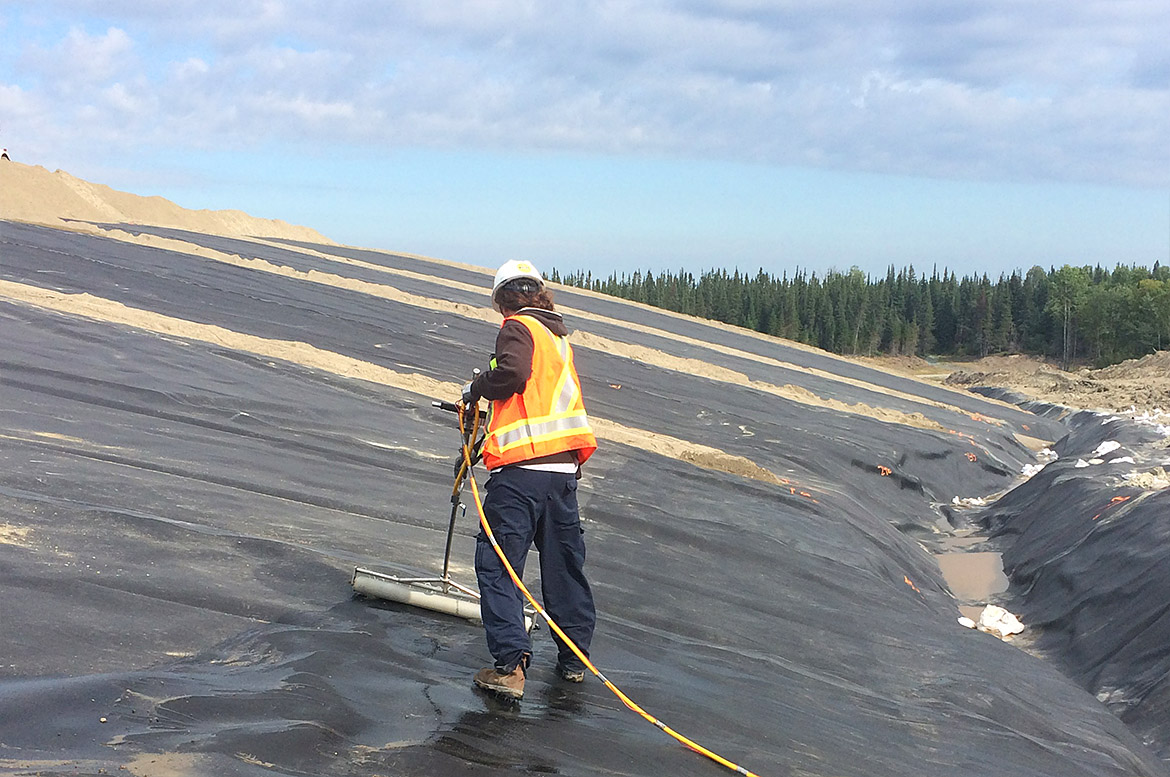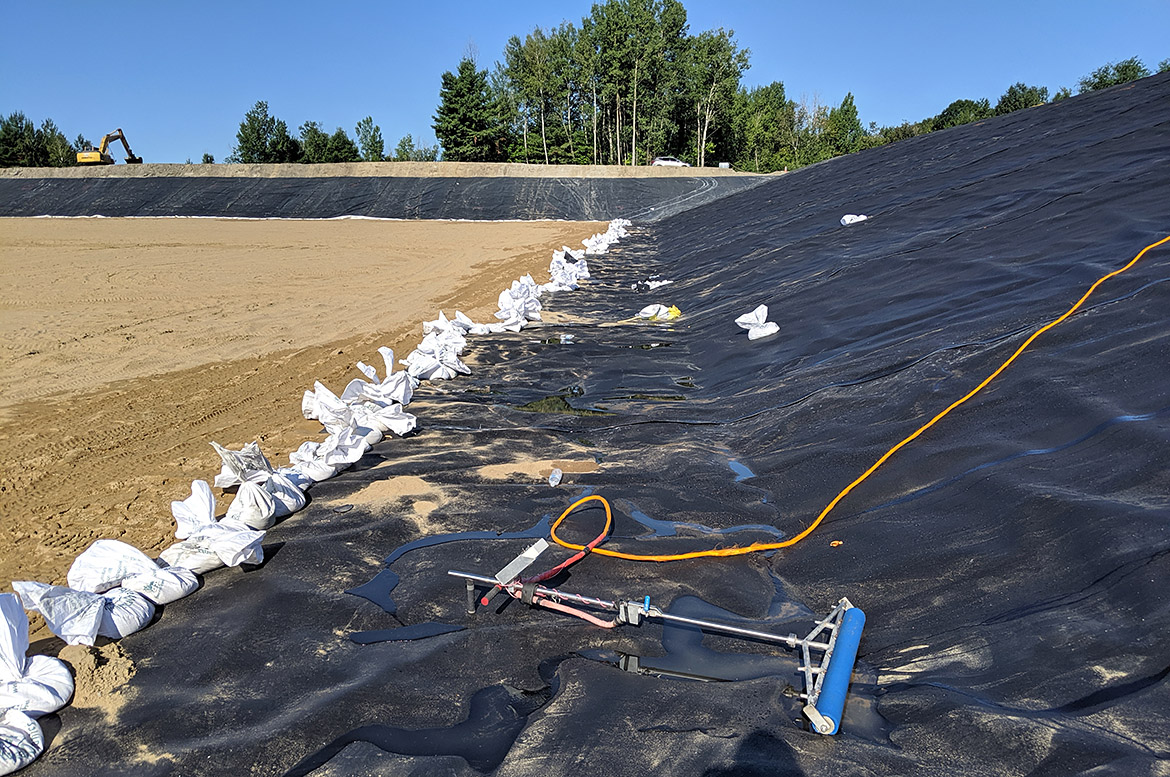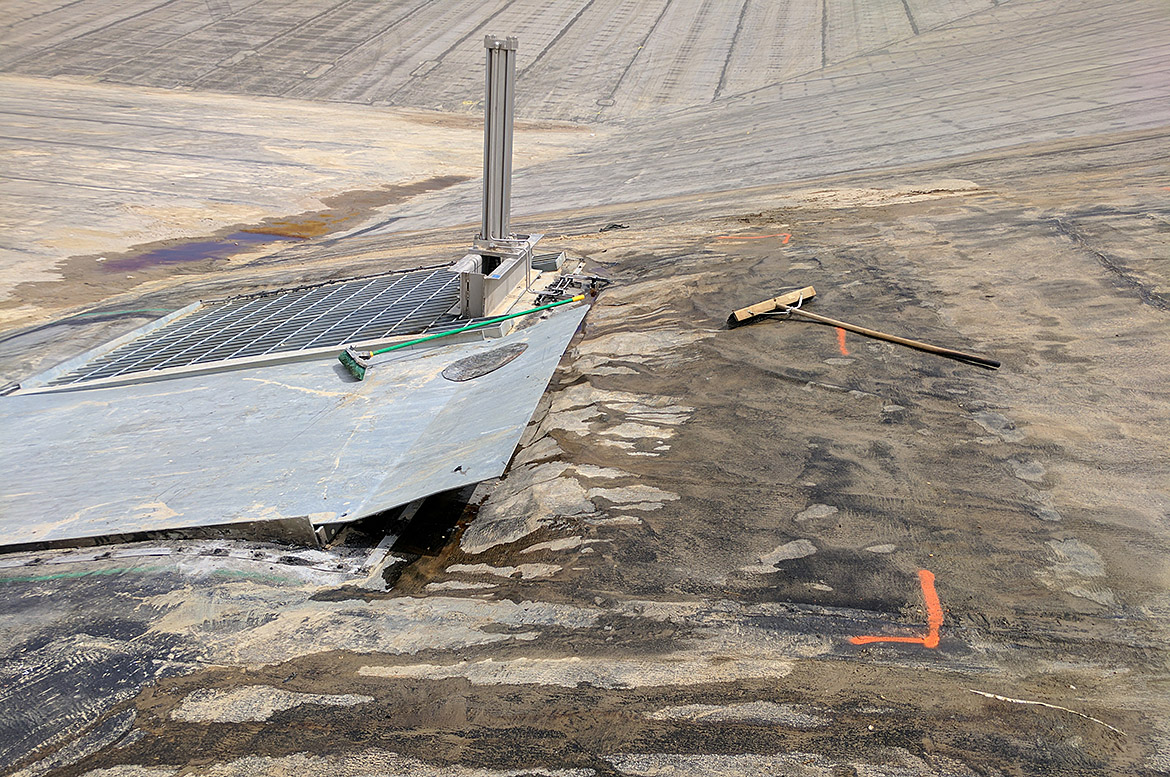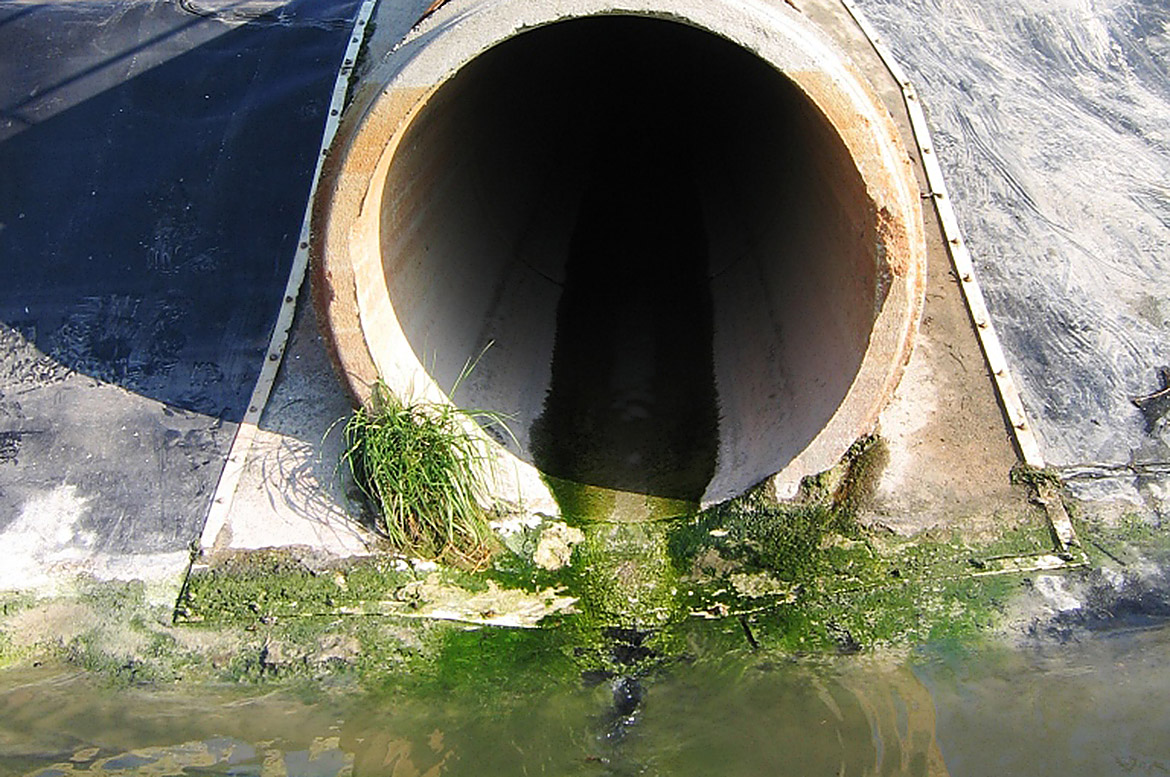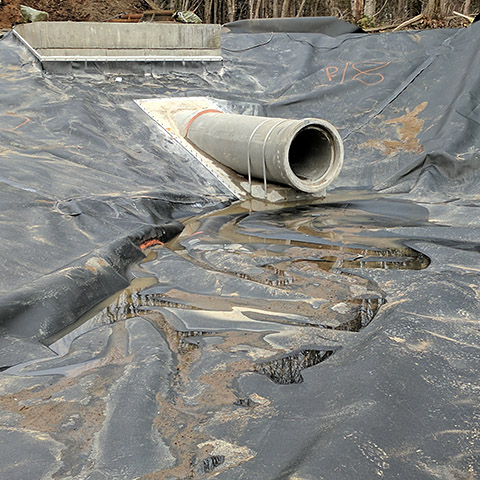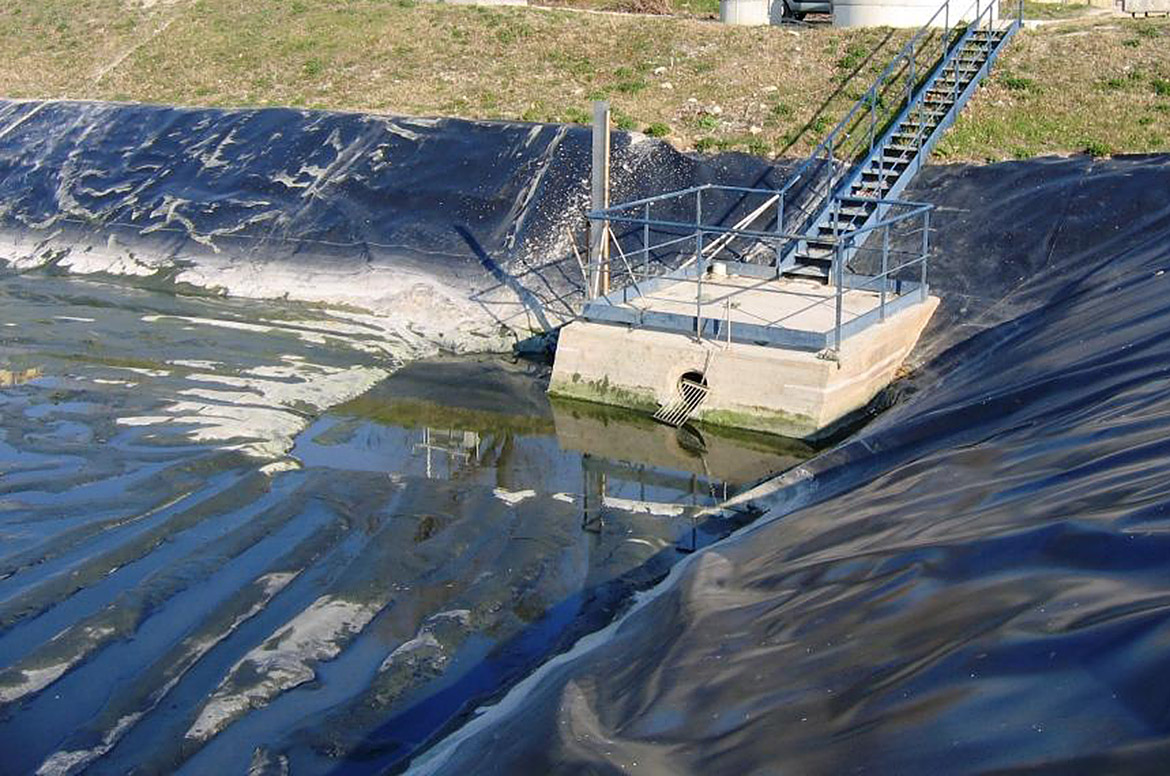
Low Points and Electrical Isolation in Water Puddle Method Eletrical Leak Location
The basic principal of all geoelectrical leak location methods is to pass an electrical current through any faults present in the geomembrane, generating electrical signals that can be detected by a qualified operator. Whilst the importance of site preparation is well known for dipole method surveys, it is also a key element of a successful water puddle survey.
Holding basins are often designed with a pumping system at their low point that allows for the recovery of residual liquids contained in the basin. Generally, there are three main designs of these pump systems :
1 - Inclined pipe with internal pump
If the pipe is made of a non-conductive material (HDPE, PVC, etc.), then these kinds of systems pose no problem for an electrical leak location survey. In any case, these systems are usually installed on a geotextile layer that is installed following the electrical leak location survey of the geombrane layer.
2 - Penetration of the embankment into a sump
In this case, pipe is laid through the geomembrane layer(s) to transport liquid to an adjacent well where it is stored before passing into the pump system. These systems sometimes use steel pipes which conduct electricity and can create false leak signals. In such cases the steel pipe should be avoided, and if the accumulated water comes into contact with the pipe, measures should be taken to isolate the pipe temporarily.Even when the pipe is non-conductive, once the liquid makes contact with the concrete manhole the electrical current can reach the grounding electrode and generate a false leak signal. The pipe should therefore be kept dry or temporarily blocked in order to ensure electrical isolation at the basin’s low point.
3- Low Point Pumping Stations
These stations are generally comprised of concrete and pipework and are therefore electrically conductive. In regard to the water lance method, the station represents a large fault in the geomembrane layer, creating false leak signals as the water used during the survey runs toward the basin’s low point and makes contact with the station’s conductive elements. It is sometimes necessary to install a physical barrier around the station with clay or bentonite to prevent water making contact with the station during the test.
In all cases, the small creases created in HDPEgeomembrane when exposed to the sun prevents the majority of the test water from reaching the basin’s low point. This improves the basin’s electrical isolation but can cause other problems for the leak location operator. These problems will be considered in a different article.



